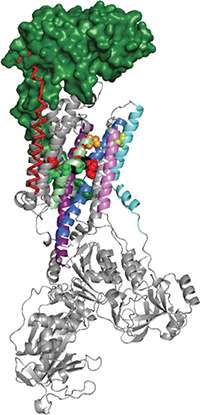Researchers reveal a new pathway through the sodium pump

A study in The Journal of General Physiology provides new evidence that the ubiquitous sodium pump is more complex—and more versatile—than we thought.
The sodium pump is present in the surface membrane of all animal cells, using energy derived from ATP to transport sodium and potassium ions in opposite directions across the cell boundary. By setting up transmembrane gradients of these two ions, the pump plays a vital role in many important processes, including nerve impulses, heartbeats, and muscular contraction.
Now, Rockefeller University researchers Natascia Vedovato and David Gadsby demonstrate that, in addition to its role as a sodium and potassium ion transporter, the pump can simultaneously import protons into the cell. Their study not only provides evidence of "hybrid" function by the pump, it also raises important questions about whether the inflow of protons through sodium pumps might play a role in certain pathologies.
The sodium pump exports three sodium ions out of the cell and imports two potassium ions into the cell during each transport cycle. Vedovato and Gadsby show that, during this normal cycle, the pump develops a passageway that enables protons to cross the membrane. When the pump releases the first of the three sodium ions to the cell exterior, a newly emptied binding site becomes available for use by an external proton, allowing it to then make its way into the cytoplasm. The protons travel a distinct route, and proton inflow is not required for successful transport of sodium and potassium.
Import of protons is high when their extracellular concentration is high (pH is low) and membrane potential is negative. The authors therefore speculate that proton inflow might have important implications under conditions in which extracellular pH is lowered, such as in muscle during heavy exercise, in the heart during a heart attack, or in the brain during a stroke.
More information: Vedovato, N., and D.C. Gadsby. 2014. J. Gen. Physiol. DOI: 10.1085/jgp.201311148


















